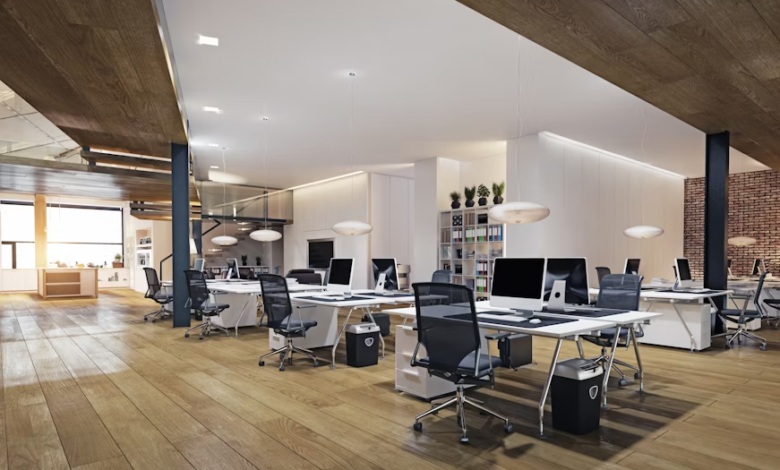Commercial Interior Designers: Transforming Workspaces with Style

A well-designed workspace does more than just look appealing—it enhances productivity, fosters collaboration, and reflects a company’s brand identity. Commercial interior designers specialize in creating functional and stylish environments tailored to the needs of businesses, from offices and retail spaces to restaurants and co-working hubs. By combining creativity, technical expertise, and an understanding of human behavior, these professionals transform ordinary commercial spaces into engaging, efficient, and inspiring work environments.
What Do Commercial Interior Designers Do?
Commercial interior designers are professionals who plan, design, and execute interior spaces specifically for commercial purposes. Unlike residential interior design, commercial projects require a greater focus on functionality, safety, accessibility, and brand representation. These designers work closely with business owners, architects, and contractors to develop spaces that meet operational needs while creating environments that employees and clients enjoy.
Their responsibilities go beyond aesthetics. Designers analyze workflows, plan traffic flow, select materials and furnishings, integrate lighting and acoustics, and ensure compliance with safety and accessibility regulations. The goal is to balance style with practicality, creating spaces that are visually appealing, efficient, and conducive to employee well-being.
See also: business reporting financial leadership
Key Services Offered by Commercial Interior Designers
Here’s a detailed breakdown of the key services offered by commercial interior designers:
1. Space Planning and Layout Design
Effective use of space is critical in commercial environments. Interior designers assess available areas, workflow requirements, and employee needs to create layouts that maximize movement, collaboration, and efficiency. For example, an open-plan office may encourage teamwork and transparency, while carefully placed private areas can provide focus and quiet for concentrated work. Thoughtful space planning also ensures that high-traffic areas remain uncluttered and that every square foot is used optimally.
2. Furniture and Fixture Selection
Choosing the right furniture and fixtures is essential for both functionality and style. Designers select ergonomic chairs, modular desks, smart storage solutions, and lighting that complement the overall design while supporting employee health and productivity. For instance, sit-stand desks promote movement and reduce sedentary fatigue, while modular furniture allows flexibility for teams of different sizes. High-quality furnishings also contribute to a professional, cohesive appearance, reinforcing the company’s image.
3. Lighting and Acoustics
Proper lighting and sound management play a crucial role in comfort and productivity. Designers integrate a mix of natural and artificial lighting solutions to enhance mood and focus, while acoustic treatments minimize noise distractions in open-plan areas. For example, sound-absorbing panels in collaborative zones can reduce chatter, and well-lit spaces with ample daylight improve overall employee satisfaction.
4. Brand Integration
Commercial spaces often serve as a physical representation of a company’s brand. Interior designers use colors, materials, signage, and design elements to reflect brand identity and make a lasting impression on clients and employees alike. This can include incorporating company colors into office walls, creating branded meeting rooms, or designing visually striking reception areas that convey professionalism and innovation.
5. Sustainability and Wellness
Modern commercial interior design emphasizes eco-friendly materials, energy-efficient lighting, and healthy indoor air quality. Designers prioritize sustainability and employee wellness by integrating green building practices, biophilic elements like indoor plants, and layouts that encourage movement and natural light. These design choices not only reduce environmental impact but also contribute to a healthier, more comfortable workplace.
6. Project Management and Execution
Commercial interior designers manage the entire design process from concept to completion. This includes coordinating with contractors, suppliers, and vendors, managing timelines, budgets, and quality control, and ensuring the project meets safety and compliance standards. Their project management expertise ensures that the final space aligns with the client’s vision and functional needs.
Benefits of Hiring a Commercial Interior Designer
Here are the key advantages of bringing a commercial interior designer on board:
1. Enhanced Productivity
A well-designed workspace improves focus, collaboration, and efficiency. Thoughtful layouts, ergonomic furniture, and designated collaboration zones contribute to higher workplace productivity and employee satisfaction.
2. Professional Aesthetic
A polished, cohesive interior enhances the perception of a business. Visitors and clients are more likely to have a positive impression when entering a professionally designed space, which can strengthen relationships and support business growth.
3. Optimized Use of Space
Commercial interior designers ensure that every square foot serves a purpose, whether it’s maximizing seating capacity, creating multifunctional areas, or accommodating future growth. This is especially valuable in high-rent locations where efficiency is essential.
4. Employee Well-Being
Designing with wellness in mind—through ergonomic furniture, proper lighting, acoustics, and air quality—reduces stress and supports the physical and mental health of employees. A healthy workspace can also reduce absenteeism and improve overall morale.
5. Cost Efficiency
While hiring a designer is an investment, their expertise helps avoid costly mistakes, such as purchasing the wrong furniture or mismanaging space. Designers source quality materials and furnishings, plan efficient layouts, and manage budgets effectively, providing long-term value.
Emerging Trends in Commercial Interior Design
Modern commercial interior design is evolving to meet the changing needs of the workforce. Some current trends include:
- Flexible Workspaces: Offices are increasingly designed with modular furniture and movable partitions to accommodate different team sizes and work styles.
- Technology Integration: Smart lighting, climate control, and connected devices are being incorporated to create more efficient and comfortable environments.
- Wellness-Focused Design: Spaces that include quiet zones, meditation rooms, or areas for physical activity are gaining popularity.
- Sustainable Materials: Eco-conscious design choices, such as recycled materials and low-VOC paints, are becoming standard practice.
Conclusion
Commercial interior designers play a pivotal role in transforming workspaces into functional, stylish, and inspiring environments. By blending creativity, technical knowledge, and an understanding of business needs, these professionals create spaces that enhance productivity, reflect brand identity, and promote employee well-being.
Investing in commercial interior design is more than just an aesthetic choice—it’s a strategic decision that benefits employees, impresses clients, and fosters long-term business growth. With the right design, workplaces can become a source of motivation, creativity, and success for years to come.




